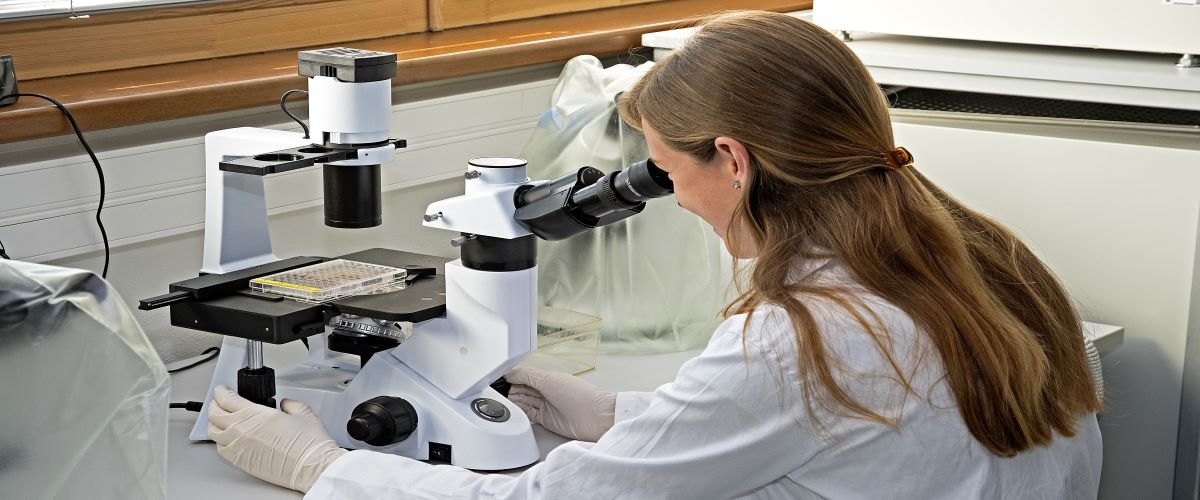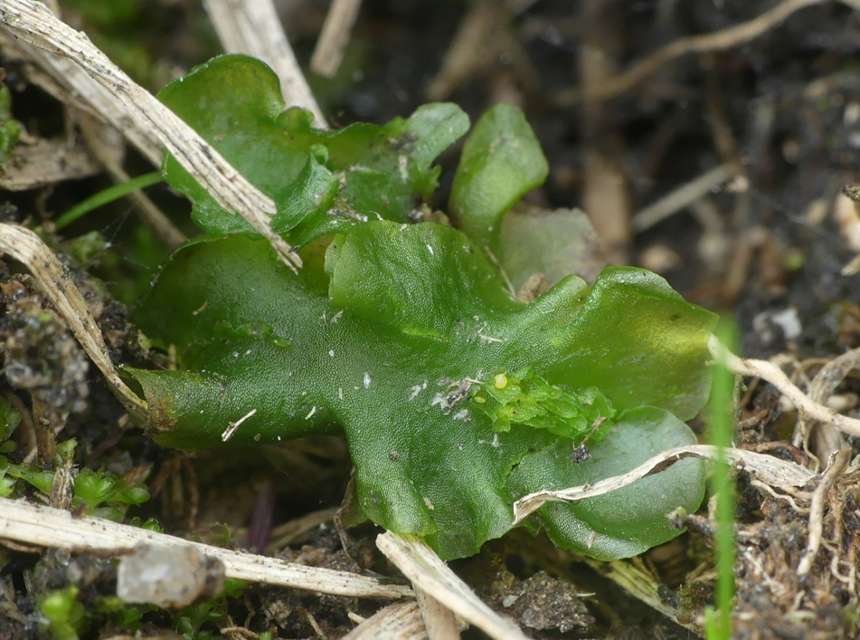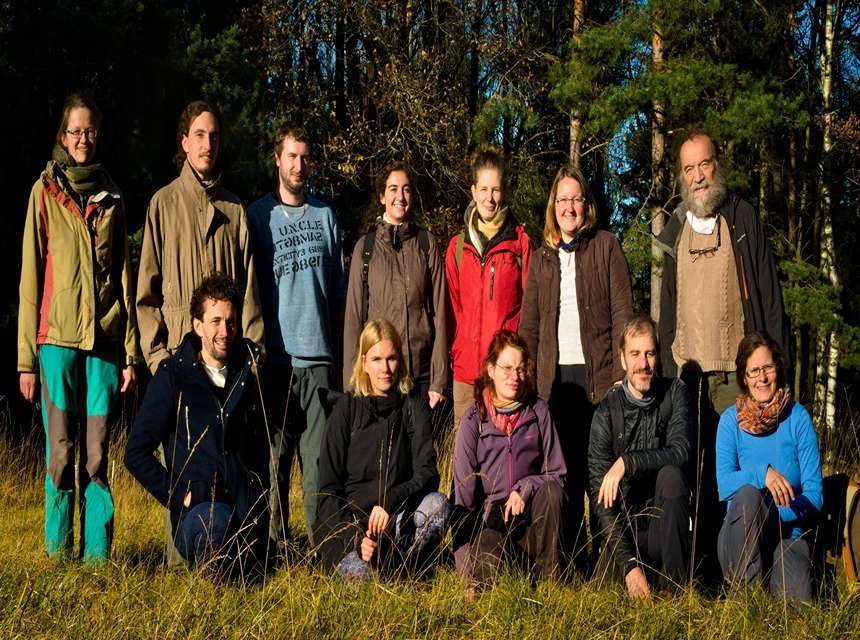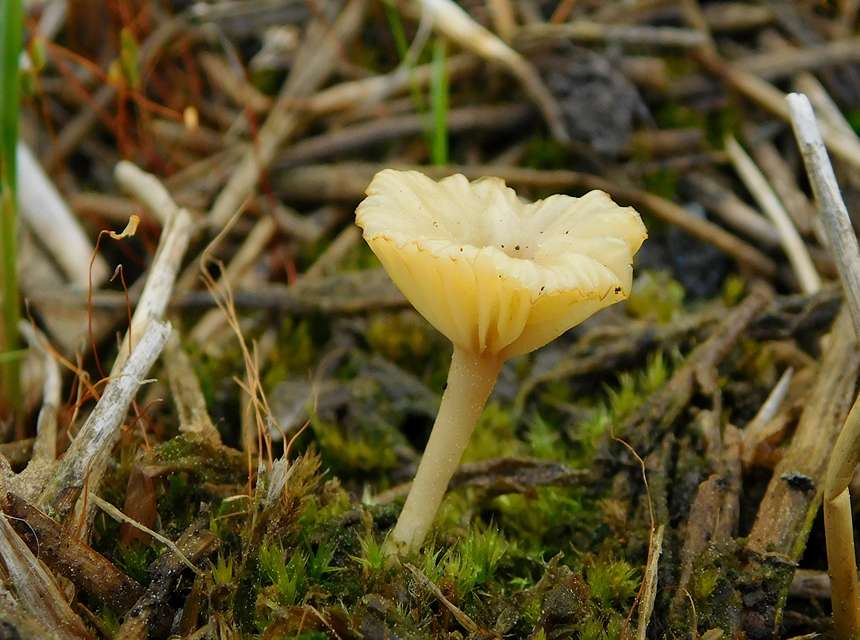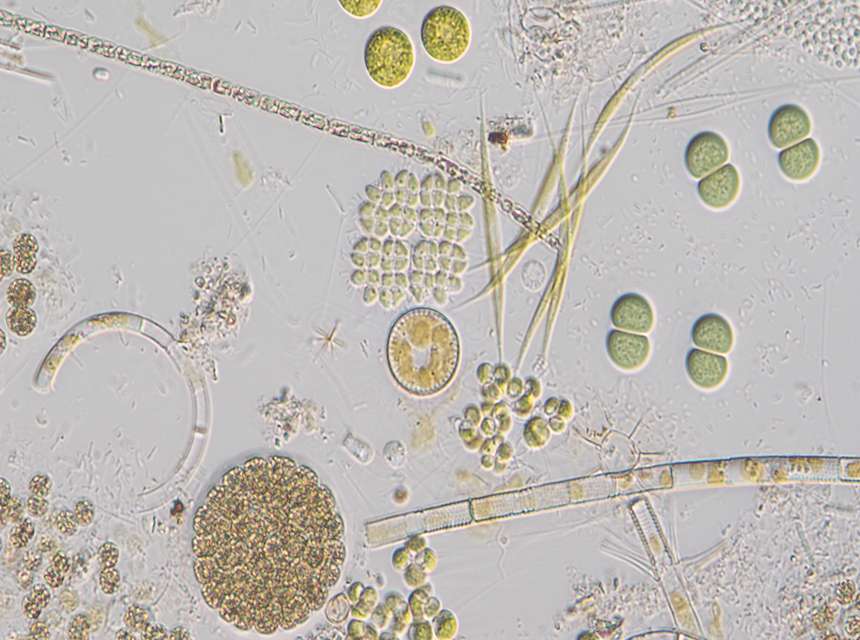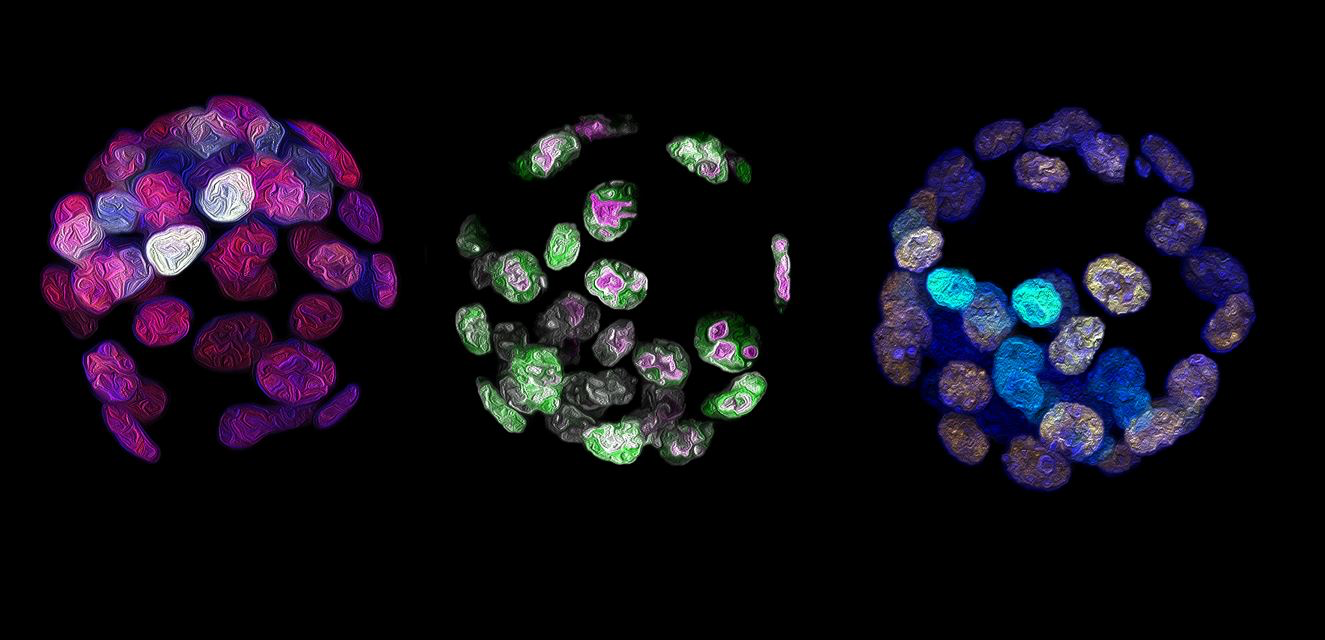Selection of publications of scientific groups of the Department of Molecular Biology and Genetics
Fluks M, Collier R, Walewska A, Bruce AW, Ajduk A. (2024) How great thou ART: biomechanical properties of oocytes and embryos as indicators of quality in assisted reproductive technologies. Frontiers in Cell and Developmental Biology. https://doi.org/10.3389/fcell.2024.1342905
Kazek M, Chodáková L, Lehr K, Strych L, Nedbalová P, McMullen E, Bajgar A, Opekar S, Šimek P, Moos M, Doležal T. (2024) Glucose and trehalose metabolism through the cyclic pentose phosphate pathway shapes pathogen resistance and host protection in Drosophila. PLoS Biology. https://doi.org/10.1371/journal.pbio.3002299
Lukeš J., Čepička I., Kolísko M. (2024) Evolution: No end in sight for novel incredible (heterotrophic) protists. Current Biology. https://doi.org.10.1016/j.cub.2023.10.065
Krejčová G, Danielová A, Sehadová H, Dyčka F, Kubásek J, Moos M, Bajgar A. (2024) Macrophages play a nutritive role in post-metamorphic maturation in Drosophila. Development. https://doi.org/10.1242/dev.202492
Mora P, Hospodářská M, Chung Voleníková A, Koutecký P, Štundlová J, Dalíková M, Walters JR, Nguyen P. (2024) Sex-biased gene content is associated with sex chromosome turnover in Danaini butterflies. Molecular Ecology. https://doi.org/10.1111/mec.17256
Svobodová K., Krištůfek V., Kubásek J., Krejčí A. (2024) Alcohol extract of the gypsy mushroom (Cortinarius caperatus) inhibits the development of Deformed wing virus infection in western honey bee (Apis mellifera). Journal of Insect Physiology. https://doi.org/10.1016/j.jinsphys.2023.104583
McMullen E, Strych L, Chodakova L, Krebs A, Dolezal T. (2024) JAK/STAT mediated insulin resistance in muscles is essential for effective immune response. Cell Communication and Signaling. https://doi.org/10.1186/s12964-024-01575-0
Bartošová-Sojková P., Butenko A., Richtová J., Fiala I., Oborník M., Lukeš J. (2024) Inside the host: understanding the evolutionary trajectories of intracellular parasitism. Annual Review of Microbiology. https://doi.org/10.1146/annurev-micro-041222-025305
Rouhová L, Podlahová Š, Kmeť P, Žurovec M, Sehadová H, Šauman I. (2024) A comprehensive gene expression analysis of the unique three-layered cocoon of the cecropia moth, Hyalophora cecropia. Insect Biochemistry and Molecular Biology. https://doi.org/10.1016/j.ibmb.2024.104152
2023
Krejčová G, Morgantini C, Zemanová H, Lauschke VM, Kovářová J, Kubásek J, Nedbalová P, Kamps-Hughes N, Moos M, Aouadi M, Doležal T and Bajgar A. (2023) Macrophage-derived insulin antagonist ImpL2 induces lipoprotein mobilization uponbacterial infection. The EMBO Journal. e114086|2023. doi.10.15252/embj.2023114086
Smykal V, Chodakova L, Hejnikova M, Briedikova K, Wu BCH, Vaneckova H, Chen P, Janovska A, Kyjakova P, Vacha M, Dolezel D. (2023) Steroid receptor coactivator TAIMAN is a new modulator of insect circadian clock. PLOS Genetics 19(9): e1010924. doi.org/10.1371/journal.pgen.1010924
Gahurova L, Tomankova J, Cerna P, Bora P, Kubickova M, Virnicchi G, Kovacovicova K, Potesil D, Hruska P, Zdrahal Z, Anger M, Susor A, Bruce AW. (2023) Spatial positioning of preimplantation mouse embryo cells is regulated by mTORC1 and m7G-cap-dependent translation at the 8- to 16-cell transition. Open Biology. doi.org/10.1098/rsob.230081
Svobodová K, Maitre A, Obregón D, Wu-Chuang A, Thaduri S, Locke B, de Miranda JR, Mateos-Hernández L, Bruce Krejčí A, Cabezas-Cruz A. (2023) Gut microbiota assembly of Gotland varroa-surviving honey bees excludes major viral pathogens. Microbiological Research. 274:127418. doi.org/10.1016/j.micres.2023.127418
Jayakodi M, Golicz AA, Kreplak J, Fechete LI, ..., Koblížková A, Neumann P, Novák P, Avila Robledillo L, Macas J, et al. (2023) The giant diploid faba genome unlocks variation in a global protein crop Nature 615 (7953): 652–659. doi:10.1038/s41586-023-05791-5
Macas J, Avila Robledillo L, Kreplak J, Novák P, Koblížková A, Vrbová I, Burstin J, Neumann P. (2023) Assembly of the 81.6 Mb centromere of pea chromosome 6 elucidates the structure and evolution of metapolycentric chromosomes. PLoS Genetics 19(2): e1010633. doi:10.1371/journal.pgen.1010633
Zeiner A, Colina F, Citterico M, Wrzaczek M. (2023) CYSTEINE-RICH RECEPTOR-LIKE PROTEIN KINASES: their evolution, structure, and roles in stress response and development. Journal of Experimental Botany on-line first: doi:10.1093/jxb/erad236
Bruce Krejčí A, Votýpková K, Lukeš J, Votýpka J. (2023) Varroa destructor Trends in Parasitology 39: 487-488. doi:10.1016/j.pt.2023.03.009
Ho Chan T, Picard-Sánchez M, Majstorović J, Rebl A, Koczan D, Dycka F, Holzer A, Korytář T. (2023) Red blood cells in proliferative kidney disease-rainbow trout (Oncorhynchus mykiss) infected by Tetracapsuloides bryosalmonae harbor IgM(+) red blood cells Frontiers in Immunology 14: 1041325. doi:10.3389/fimmu.2023.1041325
Kachale A, Pavliková Z, Nenarokova A, Roithová A, Durante I, Miletínová P, Záhonová K, Nenarokov S, Votýpka J, Horáková E, Ross RL, Yurchenko V, Beznosková P, Paris Z, Valášek LS, Lukeš J. (2023) Short tRNA anticodon stem and mutant eRF1 allow stop codon reassignment. Nature 613: 751–758. doi:10.1038/s41586-022-05584-2
Muñoz-Gómez SA, Cadena L, Gardiner AT, Leger MM, Sheikh S, Connell LB, Bílý T, Kopejtka K, Beatty T, Koblížek M, Roger A, Slamovits CH, Lukeš J, Hashimi H. (2023) Intracytoplasmic-membrane development in alphaproteobacteria involves the homolog of the mitochondrial crista-developing protein Mic60. Current Biology 33: 1099 - 1111. doi: 10.1016/j.cub.2023.02.059
Obiol A, López-Escardó D, Salomaki E, Wisniewska M, Forn I, Sà E, Vaqué D, Kolísko M, Massana R. (2023) Gene expression dynamics of natural assemblages of heterotrophic flagellates during bacterivory Microbiome 11: 134. doi:10.1186/s40168-023-01571-5
Sheikh S, Pánek T, Gahura O, Týč J, Záhonová K, Lukeš J, Eliáš M, Hashimi H. (2023) A novel group of dynamin-related proteins shared by eukaryotes and giant viruses is able to remodel mitochondria from within the matrix Molecular Biology and Evolution 40: msad134. doi:10.1093/molbev/msad134
Wong J, Panicucci Zíková A, Gahura O. (2023) The ancestral shape of the access proton path of mitochondrial ATP synthases revealed by a split subunit-a. Molecular Biology and Evolution 40: msad146. doi: 10.1093/molbev/msad146
Bajgar A, Krejčová G. (2023) On the origin of macrophage functional versatility. Frontiers in Physiology 14:1128984. doi: 10.3389/fphys.2023.1128984
Dalíková M, Provazníková I, Provazník J, Grof-Tisza P, Pepi A, Nguyen P. (2023) The role of repetitive sequences in repatterning of major ribosomal DNA clusters in Lepidoptera. Genome Biology and Evolution 15: evad090. doi:10.1093/gbe/evad090
Hejníčková M, Dalíková M, Zrzavá M, Marec F, Lorite P, Montiel EE. (2023) Accumulation of retrotransposons contributes to W chromosome differentiation in the willow beauty Peribatodes rhomboidaria (Lepidoptera: Geometridae). Scientific Reports 13: 534. doi:10.1038/s41598-023-27757-3
Kaniewska M, Chvalová D, Doležel D. (2023) Impact of photoperiod and functional clock on male diapause in cryptochrome and pdf mutants in the linden bug Pyrrhocoris apterus. Journal of Comparative Physiology A. Early View: doi:10.1007/s00359-023-01647-5
Pospíšilová K, Van ’t Hof A, Yoshido A, Kružíková R, Visser S, Zrzavá M, Bobryshava K, Dalíková M, Marec F. (2023) Masculinizer gene controls male sex determination in the codling moth, Cydia pomonella. Insect Biochemistry and Molecular Biology 160: 103991. doi:10.1016/j.ibmb.2023.103991
2022
Tumova S, Milacek M, Snajdr I and Jindra M. Unique peptidic agonists of a juvenile hormone receptor with species-specific effects on insect development and reproduction. PNAS 119 (48) e2215541119. doi.org/10.1073/pnas.2215541119
Kubásek J, Svobodová K, Půta F, Bruce Krejčí A. Honeybees control the gas permeability of brood and honey cappings. iScience 25(11):105445. doi.org/10.1016/j.isci.2022.105445
Domínguez-Martín MA, Sauer PV, Kirst H, Sutter M, Bína M, Greber BJ, Nogales E, Polívka T, Kerfeld CA. Structures of a phycobilisome in light-harvesting and photoprotected states. Nature 609, 835–845 (2022). doi.org/10.1038/s41586-022-05156-4
Kotwica-Rolinska J, Chodáková L. Smýkal V, Damulewicz M, Provazník J, Wu C, Hejníková M, Chvalová D, Doležel D. (2022) Loss of Timeless Underlies an Evolutionary Transition within the Circadian Clock. Molecular Biology and Evolution 39: msab346. doi:10.1093/molbev/msab346
Kotwica-Rolinska J, Damulewicz M, Chodáková L, Krištofová L, Doležel D. (2022) Pigment dispersing factor is a circadian clock output and regulates photoperiodic response in the linden bug, Pyrrhocoris apterus. Frontiers in Physiology 13: 884909. doi:10.3389/fphys.2022.884909
Maaroufi H, Pauchová L, Lin YH, Wu C, Rouhová L, Kučerová L, Marques Cota Vieira LM, Renner M, Sehadová H, Hradilová M, Žurovec M. (2022) Mutation in Drosophila concentrative nucleoside transporter 1 alters spermatid maturation and mating behavior. Frontiers in Cell and Developmental Biology 10:945572. doi:10.3389/fcell.2022.945572
Rouhová L, Sehadová H, Pauchová L, Hradilová M, Žurovcová M, Šerý M, Rindoš M, Žurovec M. (2022) Using the multi-omics approach to reveal the silk composition in Plectrocnemia conspersa. Frontiers in Molecular Biosciences 9:945239. doi:10.3389/fmolb.2022.945239
Štundlová J, Hospodářská M, Lukšíková K, Volenikova A, Pavlica T, Altmanová M, Richter A, Reichard M, Dalíková M, Pelikánová Š, Marta A, Simanovsky SA, Hiřman M, Jankásek M, Dvořák T, Bohlen J, Ráb P., Englert C, Nguyen P, Sember A. (2022) Sex chromosome differentiation via changes in the Y chromosome repeat landscape in African annual killifishes Nothobranchius furzeri and N. kadleci. Chromosome Research 30: 309-33. doi:10.1007/s10577-022-09707-3
Thakkar N, Giesecke A, Bazalová O, Martinek J, Smýkal V, Stanewsky R., Doležel D. (2022) Evolution of casein kinase 1 and functional analysis of new doubletime mutants in Frontiers in Physiology 13: article number: 1062632. doi:10.3389/fphys.2022.1062632
Voleníková A, Nguyen P, Davey P, Sehadová H, Kludkiewicz B, Koutecky P, Walters JR, Roessingh P, Provazníková I, Šerý M, Žurovcová M, Hradilova M, Rouhová L, Žurovec M. (2022) Genome sequence and silkomics of the spindle ermine moth, Yponomeuta cagnagella, representing the early diverging lineage of the ditrysian Lepidoptera. Communications Biology 5: 1281. doi:10.1038/s42003-022-04240-9
Wu C, Šauman I, Maaroufi H, Žaloudíková A, Žurovcová M, Kludkiewicz B, Hradilova M, Žurovec M. (2022) Characterization of silk genes in Ephestia kuehniella and Galleria mellonella revealed duplication of sericin genes and highly divergent sequences encoding fibroin heavy chains. Frontiers in Molecular Biosciences 9:1023381. doi: 10.3389/fmolb.2022.1023381
Benz C, Muller N, Kaltenbrunner S, Váchová H , Vancová M, Lukeš J, Varga V, Hashimi H. (2022) Kinetoplastid-specific X2-family kinesins interact with a kinesin-like pleckstrin homology domain protein that localizes to the trypanosomal microtubule quartet Molecular Microbiology 118: 155–174. doi: 10.1111/mmi.14958
Gahura O, Chauhan P, Panicucci Zíková A. (2022) Mechanisms and players of mitoribosomal biogenesis revealed in trypanosomatids Trends in Parasitology 38: 1053-1067. doi: 10.1016/j.pt.2022.08.010
Gahura O, Mühleip A, Hierro-Yap C, Panicucci B, Jain M, Hollaus D, Slapničková M., Panicucci Zíková A, Amunts A. (2022) An ancestral interaction module promotes oligomerization in divergent mitochondrial ATP synthases Nature Communications 13:5989. doi:10.1038/s41467-022-33588-z
Hegedüsová E, Maršalová V, Kulkarni S, Paris Z. (2022) Trafficking and/or division: Distinct roles of nucleoporins based on their location within the nuclear pore complex RNA Biology 19: 650–661. doi:10.1080/15476286.2022.2067711
Kaurov I, Heller J, Deisenhammer S, Potěšil D, Zdráhal Z, Hashimi H. (2022) The essential cysteines in the CIPC motif of the thioredoxin-like Trypanosoma brucei MICOS subunit TbMic20 do not form an intramolecular disulfide bridge in vivo Molecular and Biochemical Parasitology 248: 111463. doi:10.1016/j.molbiopara.2022.111463
Selinger M, Věchtová P, Tykalová H, Ošlejšková P, Rumlová M, Štěrba J, Grubhoffer L. (2022) Integrative RNA profiling of TBEV-infected neurons and astrocytes reveals potential pathogenic effectors Computational and Structural Biotechnology Journal 20: 2759-2777. doi:10.1016/j.csbj.2022.05.052
Hofstatter PG, Thangavel G, Lux T, Neumann P, Vondrak T, Novák P, Zhang M, Costa L, Castellani M, Scott A, Toegelová H, Fuchs J, Mata-Sucre Y, Dias Y, Vanzela A, Huettel B, Almeida CCS, Šimková H, Souza G, Pedrosa-Harand A, Macas J, Mayer K, Houben A, Marques A. (2022) Repeat-based holocentromeres influence genome architecture and karyotype evolution Cell 185: 1-16. doi:10.1016/j.cell.2022.06.045
2021
Bora P , Gahurova L, Hauserova A, Stiborova M, Collier R, Potěšil D, Zdráhal Z and Bruce AW. DDX21 is a p38-MAPK sensitive nucleolar protein necessary for mouse preimplantation embryo development and cell-fate specification. Open Biology 7:210092 (2021). doi/10.1098/rsob.210092
Bora P, Gahurova L, Mašek T, Hauserova A, Potěšil D, Jansova D, Susor A, Zdráhal Z, Ajduk A, Pospíšek M and Bruce AW. p38-MAPK-mediated translation regulation during early blastocyst development is required for primitive endoderm differentiation in mice. Commun. Biol. 4:788 (2021). doi.org/10.1038/s42003-021-02290-z
Bajgar A, Krejcova G, Dolezal T. Polarization of Macrophages in Insects: Opening Gates for Immuno-Metabolic Research. Front Cell Dev Biol 9: 629238. (2021) doi/10.3389/fcell.2021.629238.
Sember A, Nguyen P, Perez MF, Altmanová M, Ráb P, Cioffi MB. Multiple sex chromosomes in teleost fishes from a cytogenetic perspective: state of the art and future challenges. Philos Trans R Soc Lond B Biol Sci. (2021) doi/10.1098/rstb.2020.0098
Ávila Herrera IM, Král J, Pastuchová M, Forman M, Musilová J, Kořínková T, Šťáhlavský F, Zrzavá M, Nguyen P, Just P, Haddad C, Hiřman M, Koubová M, Sadílek D, Huber BA. Evolutionary pattern of karyotypes, sex chromosomes, nucleolus organizer regions, and meiosis in pholcid spiders (Araneae: Pholcidae): implications for reconstructing karyotype evolution of araneomorph spiders. BMC Evol Biol. (2021) doi/10.1186/s12862-021-01750-8
2020
Virnicchi G, Bora P, Gahurova L, Šušor A and Bruce AW. Wwc2 is a novel cell division regulator during preimplantation mouse embryo lineage formation and oogenesis. Front. Cell. Dev. Biol. 8:857 (2020). doi.org/10.3389/fcell.2020.00857
Del Llano E, Masek T, Gahurova L, Pospisek M, Koncicka M, Jindrova A, Jansova D, Iappan R, Roucova K, Bruce AW, Kubelka M and Susor A. Age-related differences in the translational landscape of mammalian oocytes. Aging Cell e13231 (2020). doi.org/10.1111/acel.13231
Yoshido A, Šíchová J, Pospíšilová K, Nguyen P, Voleníková A, Šafář J, Provazník J, Vila R, Marec F. Evolution of multiple sex chromosomes associated with dynamic genome reshuffling in Leptidea wood white butterflies. Heredity 125: 138–154. (2020) doi.org/10.1038/s41437-020-0325-9
2019
Bora P, Thamodaran V, Šušor A and Bruce AW. p38-mitogen activated kinases mediate a developmental regulatory response to amino acid depletion and associated oxidative stress in mouse blastocyst embryos. Front. Cell. Dev. Biol. 7:276 (2019). doi.org/10.3389/fcell.2019.00276
Krejcova G, Danielova A, Nedbalova P, Kazek M, Strych L, Chawla G, Tennessen JM, Lieskovská J, Jindra M, Dolezal T, Bajgar A. Drosophila macrophages switch to aerobic glycolysis to mount effective antibacterial defense. eLife 14;8. pii: e50414. (2019) doi/10.7554/eLife.50414.
Dolezal T, Krejcova G, Bajgar A, Nedbalova P, Strasser P. Molecular regulations of metabolism during immune response in insects. Insect Biochem Mol Biol 109:31-42. (2019). doi/10.1016/j.ibmb.2019.04.005
Bajgar, A., Salon, I., Krejcova, G., et al. Yeast glucan particles enable intracellular protein delivery in Drosophila without compromising the immune system. Biomaterial Sci. 7 (11) 4708-4719. (2019) doi.org/10.1039/C9BM00539K
Morgantini, C.,..., Krejcova, G, Bajgar, A, Aouadi, M. Liver macrophages regulate systemic metabolism through non- inflammatory factors. Nat. Metab. 1 (4): 445-459 (2019) doi/10.1038/s42255-019-0044-9
Meccariello A., Salvemini M., Primo P., Hall B., Koskinioti P., Dalíková M., et al. Maleness-on-the-Y (MoY) orchestrates male sex determination in major agricultural fruit fly pests. Science 27 : eaax1318. (2019) doi/10.1126/science.aax1318
Carabajal Paladino LZ, Hladová I, Berger M, Bass C, Aratchige NS, López SN, Marec F, Nguyen P. Sex chromosome turnover in moths of the diverse superfamily Gelechioidea. Genome Biol Evol 11:1307–1319. (2019) doi/10.1093/gbe/evz075
